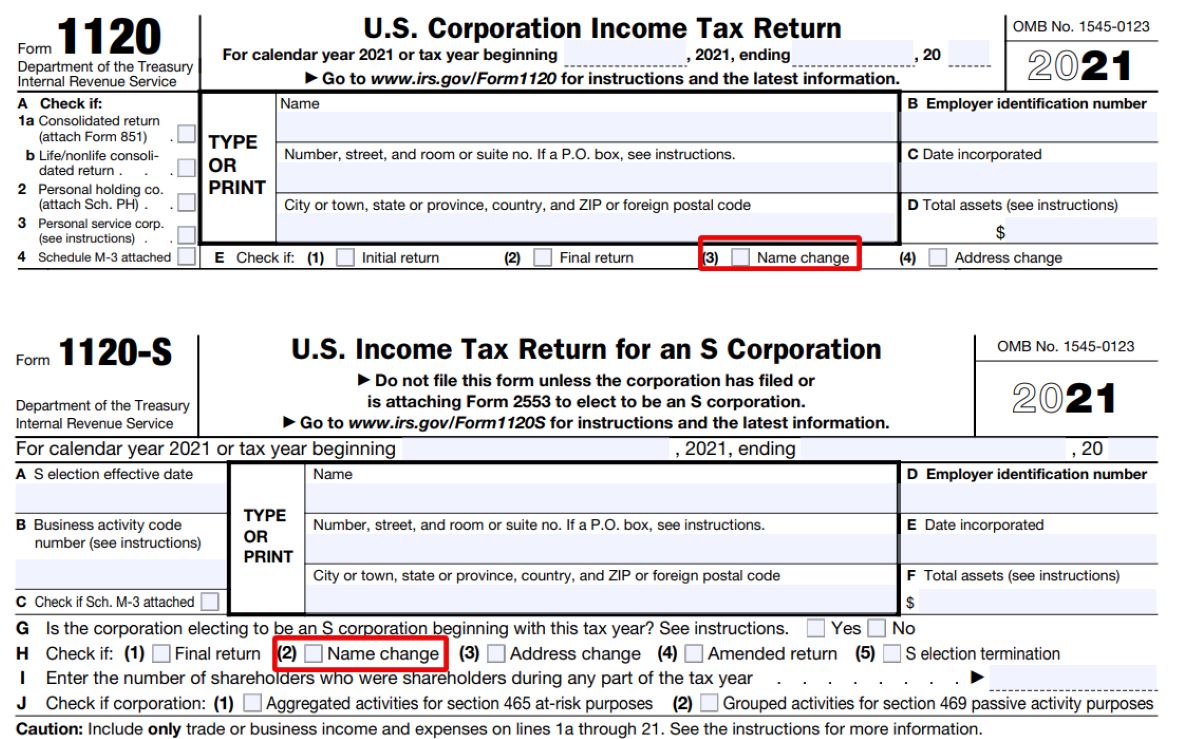

Finance
How To Change My Name On My Health Insurance
Published: October 30, 2023
Learn how to change your name on your health insurance policy and ensure it aligns with your finance needs. Discover the steps to update your personal information and stay financially protected.
(Many of the links in this article redirect to a specific reviewed product. Your purchase of these products through affiliate links helps to generate commission for LiveWell, at no extra cost. Learn more)
Table of Contents
- Introduction
- Understanding the Process of Name Change
- Contacting your Health Insurance Provider
- Required Documentation for Name Change
- Submitting the Name Change Request
- Potential Challenges and Solutions
- Verifying the Updated Name on Health Insurance
- Ensuring All Necessary Information is Updated
- Conclusion
Introduction
Changing your name on your health insurance policy is an important step in ensuring that your personal information is up to date and accurate. Whether you have recently gotten married, divorced, or legally changed your name, it’s crucial to have your health insurance reflect your current legal name. This not only helps prevent any confusion or discrepancies when accessing healthcare services, but it also ensures smooth communication between you, your healthcare providers, and your insurance company.
In this article, we will guide you through the process of changing your name on your health insurance policy. We will discuss the necessary steps, required documentation, potential challenges, and how to verify that your updated name appears correctly on your insurance. By following these steps, you can ensure that your health insurance accurately reflects your new legal name and avoid any complications when it comes to accessing the healthcare services you need.
Please note that the process of changing your name on your health insurance may vary depending on your specific insurance provider. It is important to consult your insurance company directly for detailed instructions and requirements. However, the information provided in this article will serve as a general guide to help you navigate through the process.
Understanding the Process of Name Change
Before diving into the process of changing your name on your health insurance, it’s important to understand the underlying steps and requirements involved. Generally, the process consists of contacting your health insurance provider, providing the necessary documentation, submitting a name change request, and verifying that the updated name appears correctly on your insurance card and other relevant documents.
Firstly, it is crucial to reach out to your health insurance provider directly to inquire about their specific policy regarding name changes. They will be able to provide you with the necessary information and guide you through the steps you need to take. Some insurance companies may require you to complete a specific form, while others may have an online portal or customer service line dedicated to handling name change requests.
In addition to contacting your health insurance provider, it is important to understand the documentation that will be required to process your name change. Generally, you will need to provide legal documentation that proves your name change, such as a marriage certificate, divorce decree, or court order. Make sure to gather the required documents before proceeding with the name change process to avoid any delays or complications.
Once you have gathered all the necessary documentation, you can proceed with submitting a name change request to your health insurance provider. This can typically be done through their online portal, via mail, or by contacting their customer service directly. Be prepared to provide the required documents and any additional information that may be requested by the insurance company.
It is important to note that there may be potential challenges that arise during the name change process. For example, if your health insurance is provided through your employer, you may need to work closely with your human resources department to ensure a smooth transition. Additionally, if you have any outstanding claims or ongoing medical treatments, it is essential to inform your healthcare providers about the name change to avoid any confusion or billing issues.
Once your health insurance provider has processed your name change request, it is crucial to verify that your updated name appears correctly on your insurance card and any other relevant documents. Carefully review all the information, including your name, policy number, and contact details, to confirm that everything is accurate. If you notice any errors or discrepancies, contact your health insurance provider immediately to rectify the issue.
By understanding the process of changing your name on your health insurance and being proactive in providing the required documentation and information, you can ensure a seamless transition and avoid any potential issues in the future. Taking the necessary steps to update your name on your health insurance ensures that your personal information is accurate and allows for smooth communication between you, your healthcare providers, and your insurance company.
Contacting your Health Insurance Provider
When it comes to changing your name on your health insurance, the first crucial step is to contact your health insurance provider directly. It’s important to reach out to them promptly to ensure a smooth process and to gather the necessary information for submitting your name change request.
There are several ways to contact your health insurance provider, depending on their preferred communication methods. You can start by checking their website for a dedicated section on name changes or policy updates. Often, insurance companies will have specific instructions and forms available for download or online submission.
If you can’t find the information on their website, try reaching out to their customer service department via phone or email. The customer service representatives will guide you through the process and provide you with any additional requirements or forms that need to be completed.
When contacting your health insurance provider, make sure you have your policy information readily available. This includes your policy number, member ID, and any other relevant details that can help them identify your account. Having this information on hand will streamline the process and enable the customer service representative to assist you more efficiently.
During the conversation, it’s important to clearly state that you want to change your name on your health insurance policy. Ask them about their specific requirements and procedures for name changes. They will likely provide you with detailed instructions on what documentation is needed and how to submit the request.
It’s crucial to take note of any deadlines or timeframes provided by your insurance company. Some companies may require you to submit the name change request within a certain period of time after the legal name change has occurred. Adhering to their guidelines will help ensure a smoother transition of your information.
If your health insurance is provided through your employer, it may be helpful to reach out to your human resources department as well. They can provide guidance on the internal process for updating your name in the company’s records and coordinating with the insurance provider.
By proactively contacting your health insurance provider and following their instructions for name changes, you can ensure a smooth and timely process. Remember to be patient and polite throughout the interactions, as the representatives are there to assist you in updating your information accurately.
Required Documentation for Name Change
When it comes to changing your name on your health insurance, you will need to provide certain documentation to verify the legal name change. The specific documents required may vary depending on your insurance provider and the circumstances surrounding the name change. However, there are some common documents that are typically requested. Here are the most commonly required documents:
- Marriage Certificate: If you have recently gotten married and are changing your last name, you will typically need to provide a copy of your marriage certificate. This document serves as proof of the name change and is usually accepted by health insurance providers.
- Divorce Decree: If you are reverting to your maiden name or changing your name following a divorce, you will need to provide a copy of your divorce decree. This document serves as evidence of the name change and is generally required by insurance companies.
- Court Order: If you have legally changed your name through a court process, you will need to provide a copy of the court order granting the name change. This document is essential in proving the legal name change and is typically accepted by health insurance providers.
- Driver’s License or State ID: Some health insurance providers may also require a copy of your updated driver’s license or state ID card. This document serves as additional proof of the name change and can help verify your identity.
It’s important to note that the above documents are general examples and may not cover all possible scenarios. Depending on your specific circumstances, your health insurance provider may request additional documentation or have specific requirements. It’s crucial to contact your insurance company directly to inquire about the exact documents they require for the name change process.
When providing the required documentation, make sure to submit clear, legible copies. It’s advisable to keep the original documents in a safe place and provide copies to the insurance company. If you are submitting documents by mail, consider using a trackable and secure method.
Additionally, it’s vital to ensure that the documentation provided is official and issued by the appropriate authorities. Unofficial or self-created documents are unlikely to be accepted by health insurance providers.
By understanding the required documents for the name change process and providing them accurately and promptly, you can help expedite the process and ensure that your health insurance reflects your updated legal name.
Submitting the Name Change Request
Once you have gathered the necessary documentation to support your name change, the next step is to submit the name change request to your health insurance provider. The process for submitting the request may vary depending on your insurance company, but here are some general steps to follow:
- Contact your health insurance provider: Reach out to your insurance company through their preferred method of communication – this could be via their online portal, customer service hotline, or by mailing in the required forms. Inquire about their specific process for submitting a name change request.
- Fulfill any additional requirements: Your insurance company may have additional requirements or forms that need to be completed for the name change. They may ask for specific information, such as your policy number, member ID, or proof of the name change. Ensure that you have all the necessary information and complete any required forms accurately.
- Submit the supporting documents: Include copies of the required documentation along with your name change request. Make sure the copies are clear and easily readable. It’s advisable to keep the originals in a safe place and provide only copies to the insurance company.
- Follow submission instructions: Whether you are submitting the name change request online or by mail, carefully follow the instructions provided by your health insurance provider. Pay attention to any deadlines or additional steps mentioned in the instructions.
- Keep records of your submission: It’s a good practice to keep copies of all communication and documentation related to your name change request. This includes any confirmation emails, reference numbers, or receipts obtained during the submission process. These records can serve as evidence and help resolve any issues that may arise later on.
After you have submitted your name change request, it may take some time for your health insurance provider to process the request and update your information. During that period, it’s important to keep track of any correspondence from the insurance company and to follow up if necessary.
It’s also essential to inform your healthcare providers about the name change, especially if you have any existing medical treatments or upcoming appointments. This will help ensure that your updated information is accurately reflected in their records, avoiding any confusion or billing issues.
By carefully following the submission process and providing the required documentation, you can facilitate a smooth and efficient name change request with your health insurance provider. Remember to stay proactive and organized throughout the process, keeping records of all communication and following up as needed.
Potential Challenges and Solutions
While changing your name on your health insurance policy is generally a straightforward process, there can be some potential challenges that you may encounter along the way. Being aware of these challenges and having solutions in place can help you navigate through any obstacles that may arise.
One common challenge is ensuring that all your healthcare providers are aware of the name change. It is important to inform your primary care physician, specialists, and any other healthcare providers about the name change so that they can update their records accordingly. This will help prevent any confusion or issues during future visits or when submitting insurance claims.
If you have ongoing medical treatments or appointments scheduled, it is crucial to communicate the name change well in advance. This will give your healthcare providers sufficient time to update their systems and ensure a smooth transition.
Another challenge could be coordinating the name change with your employer if your health insurance is provided through your job. In this case, it is advisable to reach out to your human resources department to understand their specific procedures for updating employee records and coordinating with the insurance provider.
If you encounter any delays or difficulties in the name change process, it’s important to communicate openly with your health insurance provider. Reach out to their customer service department and explain the situation. They may be able to provide guidance or escalate your case to ensure a prompt resolution.
In case there are any errors or discrepancies in your updated insurance documents, such as your insurance card or policy statements, contact your health insurance provider immediately to rectify the issue. They should be able to work with you to correct any inaccuracies and provide you with updated documents.
If you face challenges in gathering the required documentation for the name change, consult with your insurance provider to explore alternate options. They may be able to suggest alternative documents or procedures that can be accepted as proof of the name change.
Lastly, if you have multiple insurance policies, such as through your employer and through a spouse’s employer, it’s crucial to update your name on all relevant policies. This will ensure consistency across all your insurance coverage and prevent any potential issues when utilizing your benefits.
By staying proactive, communicating effectively, and working closely with your healthcare providers and insurance company, you can navigate through any challenges that may arise during the name change process. Remember to be patient and persistent, and seek assistance when needed to ensure a smooth transition.
Verifying the Updated Name on Health Insurance
Once you have submitted your name change request to your health insurance provider and they have processed your request, it is important to verify that your updated name appears correctly on your health insurance documentation.
The first step in verifying your updated name is to carefully review your insurance card. Check the front of the card to ensure that your name is spelled correctly and reflects the updated version. Pay attention to any other details on the card such as your policy number, member ID, and the effective dates of coverage. If you notice any errors or discrepancies, contact your health insurance provider immediately to rectify the situation.
In addition to your physical insurance card, it is important to review any other relevant documents such as your policy statements, explanation of benefits statements, and any correspondence from your insurance company. Make sure that your name appears correctly on all these documents.
If you have online access to your health insurance account, log in and review your profile information. Verify that your updated name is accurately reflected in your online account, and check that all contact information and other details are up to date as well.
It is also beneficial to contact your healthcare providers, including your primary care physician and any specialists you see regularly, to ensure that they have updated their internal records with your new name. This will help ensure that your name is correctly reflected in their billing systems and avoid any confusion during your visits or when submitting insurance claims.
Verifying the updated name on your health insurance is not only important for accurate record-keeping, but it also facilitates better communication between you, your healthcare providers, and your insurance company. Having consistent and accurate information helps prevent any billing issues and ensures a smooth healthcare experience.
Remember, if you identify any issues or discrepancies during the verification process, it is crucial to contact your health insurance provider as soon as possible. They will assist you in correcting any errors and updating your information accordingly.
By taking the time to verify that your updated name appears correctly on your health insurance documents, you can have peace of mind knowing that your personal information is accurate and up to date. This will ensure a seamless experience when accessing healthcare services and prevent any potential complications in the future.
Ensuring All Necessary Information is Updated
When changing your name on your health insurance, it is important to ensure that all necessary information is updated to reflect your new legal name. This goes beyond just the name on your insurance card and involves reviewing and updating other relevant details to ensure accuracy and efficiency in your healthcare coverage.
One crucial aspect to consider is updating your contact information. Verify that your updated name is correctly reflected in your address, phone number, and email address, and make any necessary changes. This will ensure that you receive important communications from your health insurance provider, such as policy updates, explanation of benefits, and renewal information.
In addition to contact information, review your personal details such as your date of birth, social security number, and any other identifying information. Confirm that these details are accurate in your health insurance records, as they are crucial for verifying your identity and ensuring that your claims are processed correctly.
Take the time to review and update your emergency contact information as well. This information is critical in case of unforeseen medical emergencies, and ensuring it is up to date can help healthcare providers reach out to your designated emergency contacts when necessary.
Another important aspect to consider is updating your primary care physician (PCP) information. If you have changed healthcare providers or your PCP has relocated, make sure to update this information with your health insurance company. Having accurate PCP information ensures that you have access to the right provider for your ongoing healthcare needs and allows for seamless coordination of care.
Furthermore, if you have any additional coverage, such as dental or vision insurance, verify that your new name is updated on those policies as well. This ensures consistency across all your insurance coverage and prevents any potential issues when utilizing your benefits.
Lastly, it’s essential to inform your healthcare providers about the name change, especially if you have upcoming appointments or ongoing medical treatments. Notifying them in advance will help ensure that your updated information is accurately reflected in their records, avoiding any confusion or billing issues.
By taking the time to review and update all necessary information, you can ensure that your health insurance accurately reflects your new legal name and that your personal information is up to date. This allows for efficient communication, streamlined access to healthcare services, and a seamless experience throughout your healthcare journey.
Conclusion
Changing your name on your health insurance policy is an important step to ensure that your personal information is accurate and up to date. By following the necessary steps to update your name, you can avoid any confusion or complications when accessing healthcare services and ensure smooth communication between you, your healthcare providers, and your insurance company.
Throughout the process, it is essential to contact your health insurance provider directly to inquire about their specific policy regarding name changes. They will provide you with the necessary information and guide you through the steps you need to take, including submitting the required documentation.
Make sure to gather the necessary documentation, such as a marriage certificate, divorce decree, or court order, to support your name change request. Submit the documentation and any additional information required by your insurance company in a timely manner, following their instructions for submission.
Be proactive in verifying that your updated name appears correctly on your insurance card and other relevant documents. Review your insurance documents, policy statements, and online account to ensure accuracy and consistency in your information.
Additionally, remember to update your contact information, primary care physician information, and any other relevant details to ensure all necessary information is up to date in your health insurance records.
In the event of any challenges or discrepancies, contact your health insurance provider and communicate openly with them to resolve the issues. Stay proactive and persistent throughout the process to ensure a smooth transition and accurate representation of your updated name.
Overall, by following the steps outlined in this article and maintaining clear communication with your health insurance provider, you can successfully change your name on your health insurance policy. This will ensure that your personal information is accurate and up to date, providing you with peace of mind and a seamless healthcare experience.














